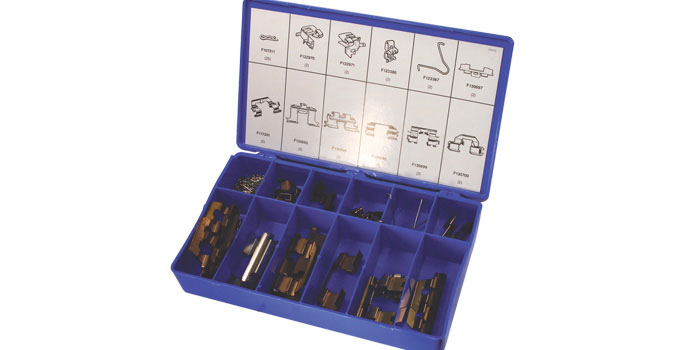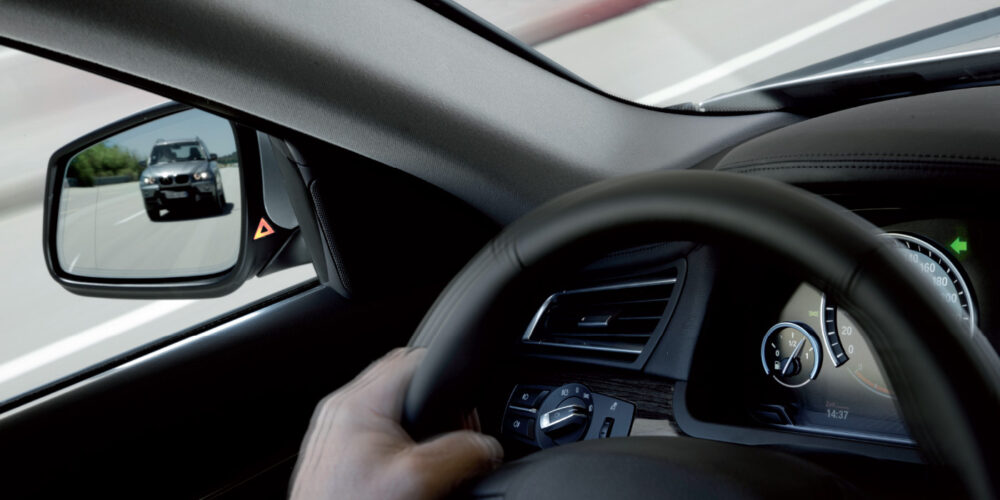 Many motorists don’t realize how important new brake hardware is when replacing a set of brake pads or shoes. Disc brake hardware is just as important as the friction material in the pads when it comes to controlling noise and allowing the brakes to stop quietly.
Many motorists don’t realize how important new brake hardware is when replacing a set of brake pads or shoes. Disc brake hardware is just as important as the friction material in the pads when it comes to controlling noise and allowing the brakes to stop quietly.
Missing, broken or badly corroded pad shims, clips and springs allow vibration and motion between the pads and caliper that can create and amplify noise. Although most premium pad sets include new pad hardware, some standard and economy pads do not. Many people are tempted to simply reuse the old hardware rather than replace it, even if new hardware is included in the box with a new set of pads.
This is a bad habit because old hardware is often corroded, cracked, bent or damaged. It may even be missing if the last person who replaced the brakes threw it away or lost it when they installed a new set of pads. Customers should be encouraged to use all of the parts that come in the box, not just the pads. The pads are held in place by the calipers, but the clips or springs that fit between the pads and calipers are there to take up slack and to dampen unwanted vibrations.
The shims that go on the back of the pads provide further insulation against both vibration and heat. Some pads come with the backing shims preinstalled or even integrally molded into the pads, while others require the shim to be mounted on the back of the pads when the pads are installed. Applying a dab of high-temperature brake lubricant to the back of the pads and the edges where the pads rest against the calipers also can help dampen noise. Other important brake hardware that is usually not included in a pad set includes the bushings, pins, clips or slides that help support the calipers on the knuckles.
Problems here can cause a caliper to stick and not center itself over the rotor when applying and releasing the brakes. This can cause uneven pad wear or brake drag. If a customer is buying a loaded caliper, all the hardware that’s needed is usually included. They get everything in one box. With drum brakes — especially high-mileage drum brakes — new hardware is even more important. The return springs that pull the shoes back away from the drums when the brakes are released may be worn, stretched or broken. This can cause the brakes to drag.
The holddown springs that hold the shoes against the backing plates are often badly corroded. If they break, the debris can jam itself between the shoe and drum causing the brake to drag or bind. Drum brakes usually have some type of self-adjuster mechanism inside to maintain minimum clearances between the drum and shoes. As the shoes wear, brake pedal travel would increase were it not for the adjusters. Like the other hardware inside a drum, the adjusters are prone to corrosion and sticking. New adjusters can assure proper brake operation.
Ditto for the adjuster springs, which help maintain tension on the adjusters so they can compensate for lining wear. Parking brake hardware often is overlooked when pads or shoes are replaced. Many people never use their parking brake. Lack of use can allow cables to corrode and stick in place, preventing the parking brake from applying or releasing. On newer vehicles with automatic parking brakes that apply with the press of a button or when the transmission is shifted into park, this is less of a problem. Even so, the parking brake mechanism and cables also should be inspected to make sure everything is in good condition and will work when the parking brake is applied.
When replacing disc or drum brake hardware, you will also will need a tube of high temperature brake lubricant. Ordinary chassis grease should never be used for this purpose because it may run at high temperature and contaminate the brake linings.
Courtesy Counterman.














